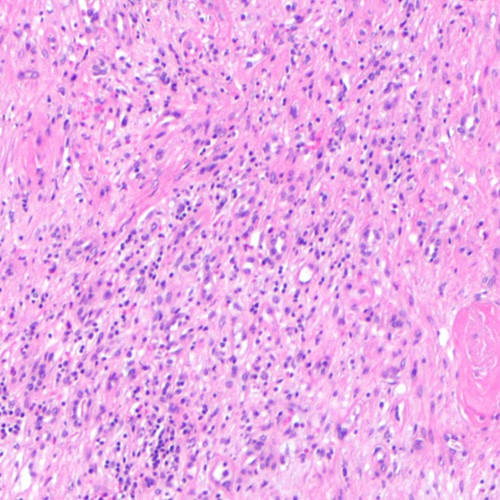Centenarians—individuals aged 100 years or more—offer a biological paradox. Despite carrying chronic inflammation, they tend to live longer and healthier than expected. This phenomenon, sometimes called “inflammaging,” is usually harmful. Yet, these people seem to resist its damaging effects. A 2025 study by researchers from Spain and the U.S. asked a bold question: does a 100-year-old body still respond to exercise?
The answer, surprisingly, is yes.
In a carefully designed experiment, the research team demonstrated that a short, low-impact workout triggered measurable changes in the immune systems of centenarians. The findings point toward an enduring molecular adaptability—something many assumed was lost at such an advanced age.
The Experimental Setup: Centenarians Move for Science
Seven centenarians, aged 100 to 104 years (six of them women), volunteered for the study. They lived in three nursing homes in Madrid. Each person participated in two different sessions separated by a one-week rest period.
In the first session, they engaged in a 17–22 minute workout. This included walking, seated mobility drills, and resistance training using leg presses (rated 8/10 in intensity). In the second session, they simply rested in a seated position for the same amount of time. Blood samples were drawn before and after both sessions.
Researchers used a cutting-edge tool—the Olink Explore Inflammation panel—to measure levels of 368 inflammation-related proteins. These proteins give insight into how the immune system is behaving at any given time.
Exercise Changes the Blood: Inflammation Drops Quickly
After exercise, the scientists found that 52 proteins showed significant downregulation. These included several well-known inflammation regulators like TNF (tumor necrosis factor), IL10 (interleukin-10), IL1RN (interleukin 1 receptor antagonist), and many chemokines from the CCL family. In contrast, only nine proteins changed during the rest session. And only three proteins overlapped between both conditions.
This difference suggests the changes were directly linked to physical activity, not just time or sampling variability.
Pathway analysis showed that exercise influenced ten key signaling routes related to aging. These pathways are involved in immune cell trafficking, cytokine signaling, cell death regulation, and the body’s inflammatory response.
TNF and Friends: The Proteins That React to Movement
A deeper look at protein interactions revealed a dense network of immune regulators. Among the most affected was TNF, a protein widely studied for its role in chronic inflammation and aging. High levels of TNF predict mortality in older adults. In this study, exercise caused a sharp drop in TNF levels, highlighting its sensitivity to physical stress—even in people over 100.
Other downregulated molecules included TNFSF10 (TRAIL), TNFSF12 (TWEAK), FASLG (Fas ligand), and TNFRSF4 (OX40). These proteins belong to the TNF superfamily and are heavily involved in triggering apoptosis—the process of programmed cell death.
Although apoptosis is vital for immune regulation, excessive activation is linked to immune system breakdown and tissue damage in aging. By lowering these proteins, exercise may offer a short-term reprieve from inflammatory and degenerative pressures.
Less Immune Overdrive, More Balance?
Another key player, TLR3 (Toll-like receptor 3), also dropped after exercise. TLR3 detects viral molecules and activates immune responses. A reduction in TLR3 may mean reduced unnecessary inflammation—an important benefit for the elderly.
The drop in chemokines like CCL3, CCL20, CCL23, and CCL24 also hints at reduced recruitment of immune cells to inflamed areas. These molecules usually act like "immune GPS signals," calling cells to areas where they're needed. Suppressing them may calm inflammation in the short term.
In younger people, exercise first raises pro-inflammatory markers (like TNF) and then triggers a wave of anti-inflammatory agents such as IL6 and IL10. This balance supports muscle repair and immune harmony. But the centenarians in this study did not show a noticeable increase in IL6.
Why Didn’t IL6 Increase?
In younger muscles, IL6 rises with contractions and acts as a key trigger for the body’s anti-inflammatory response. It helps stimulate IL10 and IL1RN production. The centenarians, however, showed no significant IL6 increase after exercise.
This may reflect age-related declines in muscle function, especially due to sarcopenia—a condition where muscles shrink and weaken with age. Smaller or less active muscles produce fewer signaling molecules. It’s also possible that the exercise intensity wasn’t high enough to trigger this response, though it was challenging for the participants.
Despite this, many inflammatory proteins still decreased, including some with known links to age-related diseases. So even without a full anti-inflammatory cascade, the body still reacted in helpful ways.
Dual Effects: Anti-Inflammatory Molecules Also Decreased
Interestingly, some anti-inflammatory proteins also dropped. IL10, IL13, and IL1RN all decreased after exercise. This may sound counterintuitive, but the immune system often works in feedback loops. A decrease in both pro- and anti-inflammatory agents suggests that exercise might reset immune signaling, rather than simply boosting or suppressing one side.
This complexity reflects the body’s effort to maintain balance—a dance between attack and calm. And even after a century of life, the ability to dance remains.
Small Sample, Big Insight
The study’s main limitation was its sample size—only seven participants. Recruiting centenarians, especially those fit enough to exercise, is a challenge. Ethical considerations also limited the number of blood samples taken after each session.
Still, the findings are groundbreaking. They reveal that molecular adaptability to exercise exists even in people past 100. These effects occurred after a single session. It remains unknown how long they last or whether they build up over time.
Sadly, three participants died within a year of the study. Their contributions, however, offer new hope for how movement might improve quality of life for others in their age group.
Why This Matters in the Age of Longevity Tech
Today’s world is buzzing with ideas about life extension. Gene editing, stem cells, and expensive pharmaceuticals grab the headlines. But this study reminds us that something as ancient and accessible as movement still matters.
At the very end of life, a short walk and a few leg presses may tweak the very molecules that define our biological age. They might not reverse aging, but they could help ease its impact.
The authors encourage further studies with more participants, longer observation periods, and deeper immune profiling. They hope to learn whether repeated sessions can create lasting benefits, or whether exercise might help extend healthspan even at life’s final stages.
Move When You Can, However You Can
The findings are simple yet profound: our bodies remember how to adapt, even after a hundred years.
For caregivers, clinicians, and family members, this study offers a message of cautious optimism. Exercise—even gentle, guided movement—might help preserve not only mobility but also immune function in the very old.
It’s never too early or too late to move. And as this study shows, even centenarians have something to gain from it.
The study is published in the journal Aging Cell. It was led by researchers from University of California Irvine.







